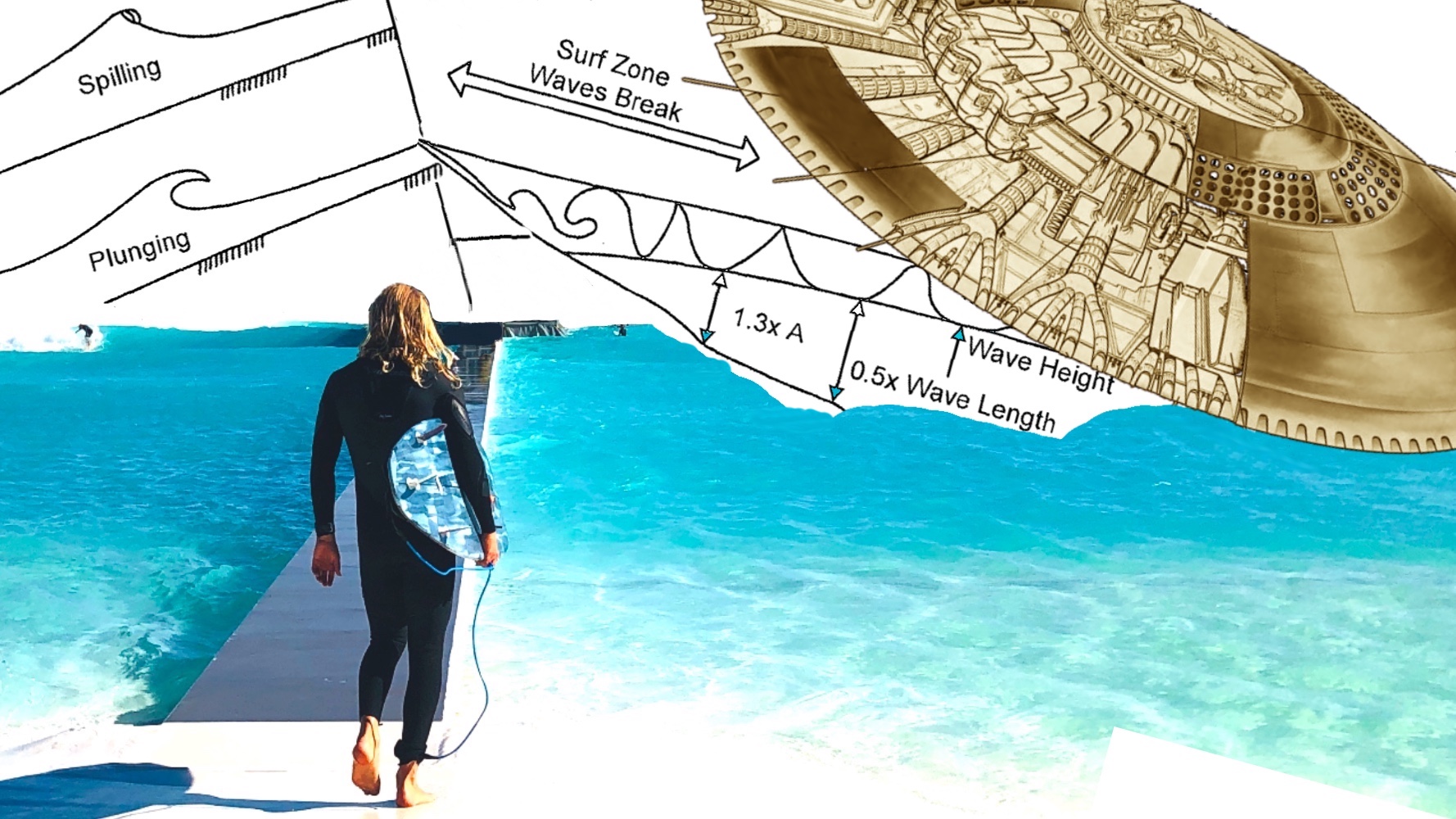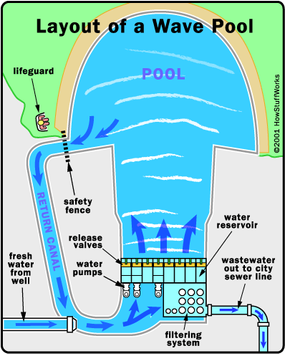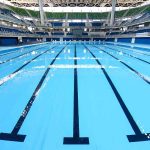Wave pools have become increasingly popular in recent years as a fun and exciting way to enjoy the beach experience without the need for an ocean. These man-made pools create artificial waves that allow people to surf, swim, and play in a controlled environment. But have you ever wondered how these wave pools actually work? In this article, we will take a closer look at the fascinating technology behind wave pools and explore the science that makes them possible.
The Basics of Wave Pool Technology
At its core, a wave pool is a large swimming pool equipped with a wave generation system. This system is responsible for creating waves that mimic the ocean’s natural ebb and flow. The technology used in wave pools varies depending on the specific design and size of the pool, but there are a few key components that are present in most wave pool systems.
Wave Generating Mechanisms
The primary component of a wave pool is the wave generating mechanism. There are different methods used to generate waves, but the most common technique involves using paddles or air chambers to push water forward, creating a wave-like motion. These paddles or air chambers are typically located at one end of the pool and are controlled by a computer system that determines the size and frequency of the waves.
Another method used in some wave pools is the use of large pistons or pumps that push water up and down, creating waves. These systems are often more powerful and can generate larger waves compared to paddle-based systems.
Water Circulation System
In order to maintain a consistent wave pattern throughout the pool, wave pools are equipped with a water circulation system. This system is responsible for keeping the water moving and preventing stagnation. It typically consists of pumps and filters that circulate the water, ensuring that it remains clean and free from debris.
The water circulation system also helps distribute the generated waves evenly across the pool, ensuring that all areas receive a fair share of wave action. This allows swimmers and surfers to enjoy a consistent and enjoyable wave experience regardless of their location in the pool.

Credit: wavepoolmag.com
The Science Behind Wave Pool Waves
Creating waves in a wave pool involves a combination of physics and engineering principles. Understanding the science behind wave pool waves can help us appreciate the complexity of these systems and the effort that goes into creating a realistic wave experience.
Wave Generation
In nature, waves are created by the wind’s interaction with the water’s surface. The energy from the wind is transferred to the water, causing it to move in a circular motion and form waves. In wave pools, this natural process is replicated using artificial means.
The wave generation mechanisms in wave pools create waves by displacing water and creating a disturbance. This disturbance then propagates through the pool, creating a wave that moves towards the shore. The size and shape of the wave are determined by the design and settings of the wave generation system.
Wave Refraction And Reflection
One of the challenges in creating waves in a wave pool is ensuring that they behave realistically and mimic the ocean’s waves. In nature, waves undergo refraction and reflection as they encounter different depths and obstacles. These phenomena cause waves to change direction and interact with each other, creating the complex wave patterns we see at the beach.
In wave pools, engineers use various techniques to simulate refraction and reflection. By carefully designing the pool’s shape and adding obstacles such as rock formations or artificial reefs, they can manipulate the waves’ behavior and create a more realistic wave experience.
Wave Absorption
Another important aspect of wave pool design is wave absorption. In nature, waves gradually lose energy as they approach the shore, eventually breaking and dissipating. In wave pools, engineers have to ensure that the waves do not bounce back and forth indefinitely, as this can create chaotic and unsafe conditions.
To prevent wave reflection, wave pools are equipped with wave-absorbing walls or slopes that absorb the waves’ energy and prevent them from bouncing back. This helps maintain a controlled wave environment and ensures the safety of the swimmers and surfers in the pool.

Credit: m.youtube.com
Types of Wave Pools
Wave pools come in different shapes and sizes, catering to a variety of needs and preferences. Here are a few common types of wave pools that you may come across:
Recreational Wave Pools
Recreational wave pools are typically found in water parks or amusement parks and are designed to provide a fun and exciting wave experience for people of all ages. These pools often feature smaller, more manageable waves that are ideal for swimming, bodyboarding, or simply enjoying the water.
Surfing Wave Pools
Surfing wave pools are specifically designed to create larger, more powerful waves that are suitable for surfing. These pools often use advanced wave generation technology, such as pneumatic systems or traveling wave systems, to produce waves that closely resemble those found in the ocean. Surfing wave pools have gained popularity among surfers who want to practice their skills in a controlled and consistent environment.
Competition Wave Pools
Competition wave pools are designed to meet the requirements of professional surf competitions. These pools are capable of generating massive waves that can reach heights of several meters, providing an exhilarating and challenging experience for the participants. Competition wave pools often incorporate advanced wave generation mechanisms and precise wave control systems to ensure fair and consistent wave conditions for the competitors.
The Future of Wave Pools
As technology continues to advance, so does the potential for wave pool innovation. Wave pools are becoming more sophisticated and realistic, offering an ever-improving experience for surfers and water enthusiasts.
One exciting development in wave pool technology is the use of artificial intelligence (AI) and machine learning algorithms to optimize wave generation. By analyzing various factors such as wind conditions, pool shape, and user preferences, AI-powered wave generation systems can create customized waves that cater to individual needs and skill levels.
Additionally, there is ongoing research into wave pool designs that can accommodate larger crowds and create more diverse wave patterns. Some wave pool concepts even propose the use of multiple wave generation mechanisms to simulate different wave types, allowing users to experience a wider range of surfing conditions.
In Conclusion
Wave pools are an incredible feat of engineering and technology. By harnessing the principles of physics and replicating the natural processes of wave formation, wave pools provide a safe and controlled environment for people to enjoy the thrill of the ocean’s waves.
Whether you’re a beginner learning to surf or a professional looking to practice your skills, wave pools offer a unique and accessible way to experience the joy of riding waves. As wave pool technology continues to evolve, we can expect even more exciting developments in the future, opening up new possibilities for water recreation and surf culture.





